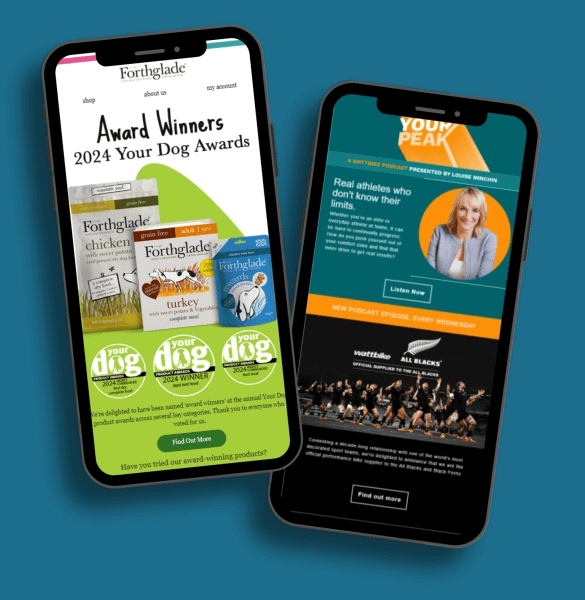Why email deliverability is important and how to improve it
Deliverability is the ability of an email message to successfully arrive in the recipient’s main email inbox. All too often, businesses can spend hours creating amazing email campaigns only for them to never reach the intended destination.
The whole point of sending an email is because you want the recipient to read it and take an action. But if it never reaches their primary inbox, instead landing in their promotional or worse still, their spam folder, then it can feel like a waste of time.
What are email bounces?
There are two types of bounces to be aware of:
Soft bounces: A temporary issue in delivering the email due to a problem that can be resolved, such as a full inbox
Hard bounces: This is a permanent bounce which means that there is an issue with the email address you are mailing. This could be that the email address has a typo in it, or is no longer being active
Continuous hard bounces can become a bigger issue, as they can damage your sending domain reputation, resulting in your emails being marked as spam and never hitting inboxes.
What is email domain reputation?
This is the overall health of your branded domain, and this is affected by your spam complaint rates, bounce rates and email engagement.
✔ When people are engaging with your emails, by opening and clicking, your sending reputation improves – resulting in the ISPs algorithms being able to identify your messages as suitable to deliver to inboxes.
X The more bounces and complaints, and the fewer opens you have, the more likely it is that the ISPs will view your emails negatively and put you into spam folders, or even block your domain entirely. And this can take a lot of time and work to repair.
Improving domain reputation
• Use your own domain in your ‘from’ address for your emails. If you are still using an ESP default one, update this to your own domain asap.
• Set up a dedicated sending domain. A branded dedicated sending domain is a requirement for bulk senders.
DMARC authentication
DMARC authentication is essential now that Yahoo and Gmail have stepped up on the sender requirements in 2024. This authentication allows the ISPs to determine whether or not your email is legitimate. A DMARC policy determines what happens to an email after it is checked against SPF and DKIM records.
An email either passes or fails SPF and DKIM. The DMARC policy determines if failure results in the email being marked as spam, getting blocked, or being delivered to its intended recipient. Brands use DMARC policies to protect the domain in their sender email address from unauthorised use by scammers who may be impersonating their domain.
How to set-up DMARC authentication
DMARC authentication is typically set up in your DNS provider. We recommend configuring your DMARC policy to at least p=none on your root domain. Google has specific guidelines to follow which can be found here.
The age of your domain is important
This is why we always recommend ‘warming-up’ your IP address by sending to small groups of highly engaged customers for a period of time to begin with – as more opens will build your reputation.
Make it easy for people to unsubscribe.
Every marketing email you send should already have an unsubscribe link but now it is a requirement for Gmail and Yahoo that you provide a single step unsubscribe process, plus another option within the message body of the email (Klaviyo has automatically implemented a single step ‘list unsubscribe header’ for all Gmail and Yahoo emails that meets this requirement).
Keep your database clean
By building sunsetting flows to remove people who have stopped engaging with your emails for a long period of time. Email them to encourage them to re-engage or choose to stop receiving emails. This may also have the added benefit of reducing the mailable data fees you are paying to your ESP. And make sure to remove hard bounces from your list too.
Stop sending to your entire database every time
By doing this you are mailing people you know are not likely to open your emails and risk reputation damage. Instead set up engagement segments, and email your most engaged segments more frequently, and the less engaged segments only with your best offers that are more likely to tempt them into action. Make those subject lines as strong and enticing as possible!
Contact us if you would like to learn more about how PAASE can help you drive more engagement from your email marketing.





